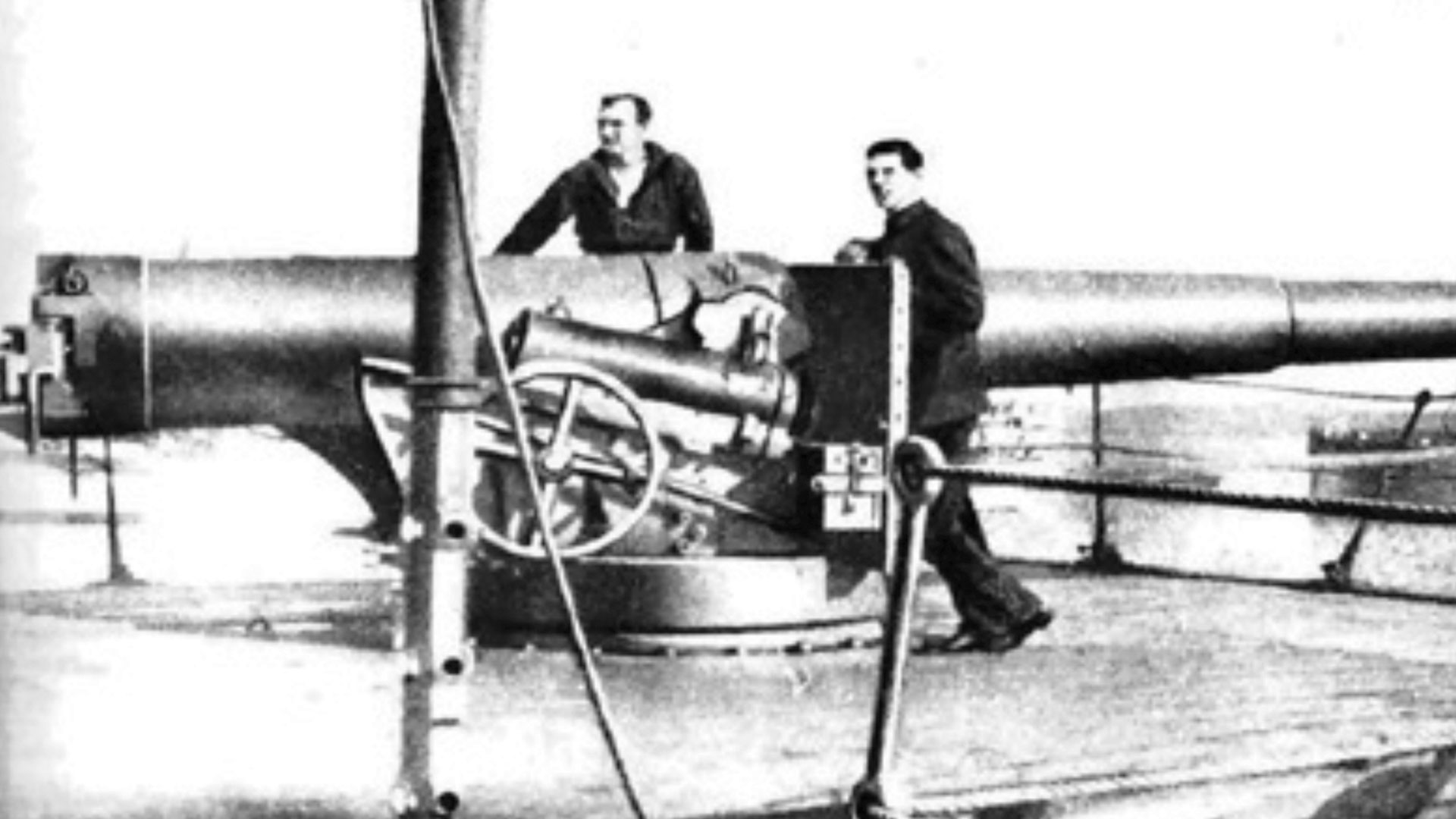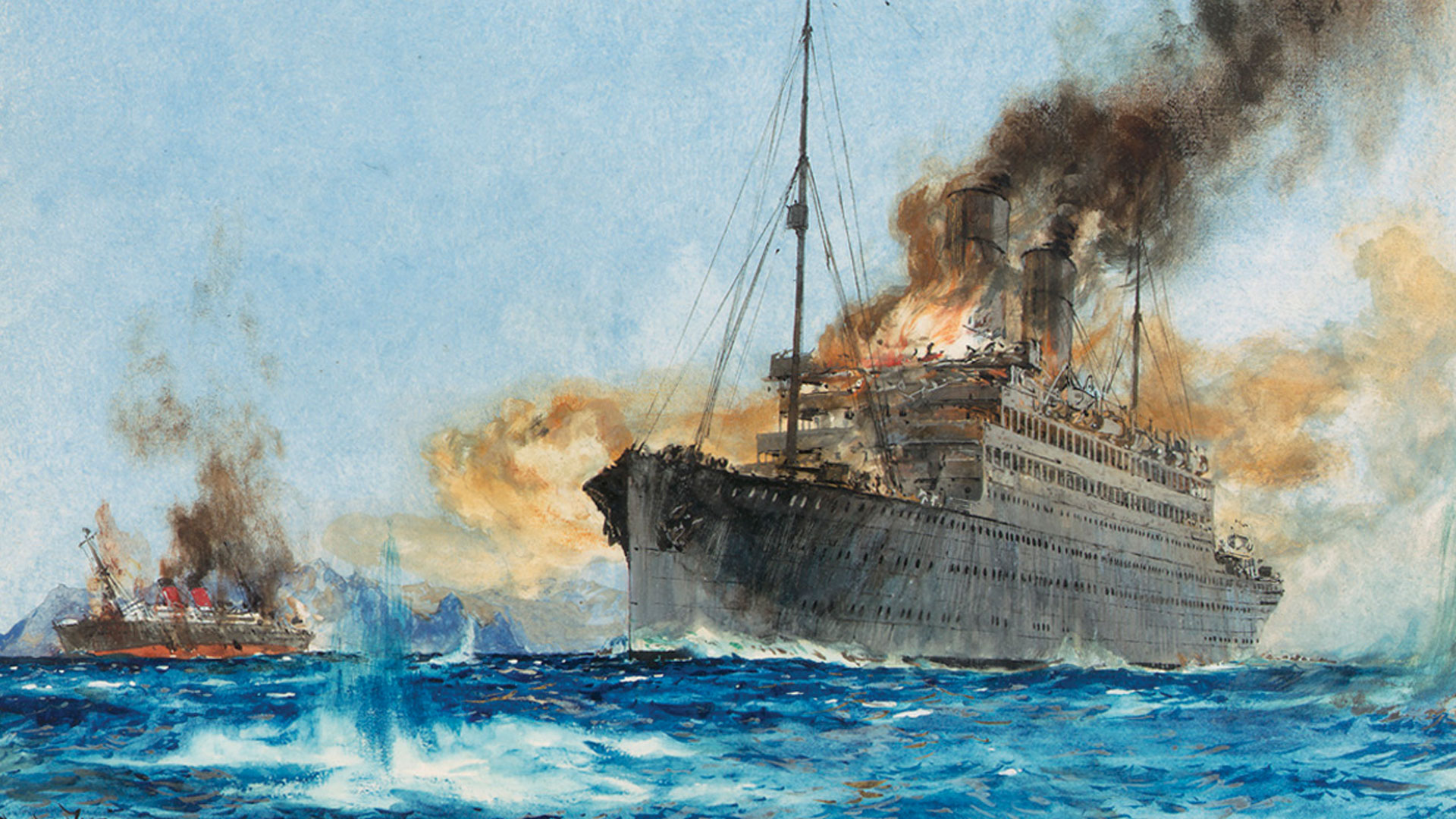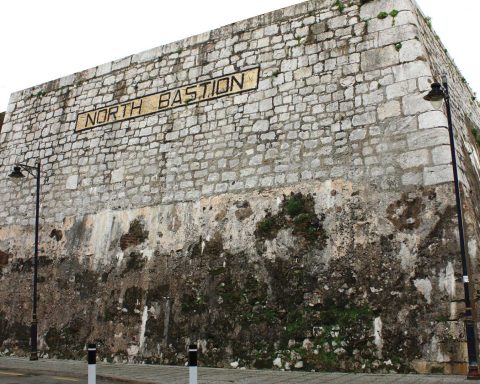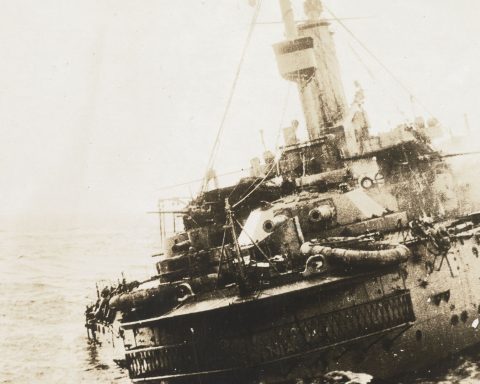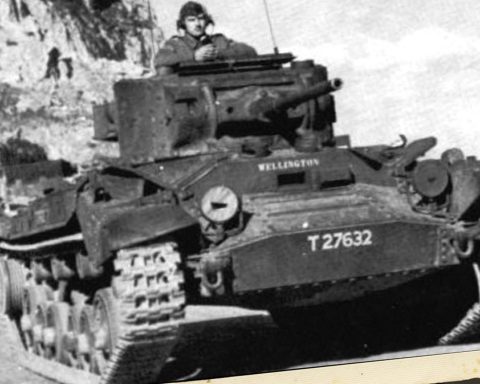The story behind some of Gibraltar’s stamps
In 1967, the Post Office issued a set of stamps depicting ships that had connections to Gibraltar. The 2d stamp showed HMS Carmania. How many of us ever wondered what the connection was? Most of the other stamps were well known ships, such as HMS Hood, Mary Celeste and others, but what about the Carmania. What was a White Star liner doing with a prefix of HMS.
This is her story.
As the Sabre rattling in Europe reached its crescendo, Germany began to convert some of her merchant ships into armed cruisers in order to lull unsuspecting cargo ships into a trap.
Britain, not to be outdone, did the same. One of these conversions was the White Star Liner Carmania. This 19,524ton liner was fitted with eight 4.7inch guns on reinforced deck and fitted with a splinter shield. She was repainted grey to disguise her.
She sailed from Liverpool on the 15th of August 1914 under Captain Grant RN but Captain Barr RNR., the original Cunard captain remained on board. They were to patrol the area off Northern Ireland, but on the 19th she was ordered to Shell Bay, Bermuda where she arrived about the 24th of that same month. The Admiralty had intercepted an encoded message to Berlin which they were unable to read but were able to establish that it originated from the German gunboat SMS Elber. The Admiralty feared that the Germans were attempting to disrupt the sea route round Cape of Good Hope, a strategically important life line to and from the east. The Carmania was ordered into the South Atlantic as a store ship, presumably for other warships in the area. On the 29th of August she left Bermuda and headed south to meet a British fleet that was patrolling the coast of Venezuela. The Admiralty intercepted a further communication which indicated that the Cap Trafalgar, under Korvettenkapitan Julius Wirth, along with the cruiser Dresden and Komprinz Wilhem were due to meet around the Trinidade Islands, off the coast of Brazil.
On the 11th of September the Carmania was ordered to investigate and report any findings to HMS Bristol which was part of a fleet patrolling in the southern Caribbean. Captain Grant and Barr conferred and decided that they should disguise their ship and the decision was made to add a third funnel. This was made up of light wood and fitted en route.
Some German ships were caught well away from the Fatherland when war was declared and these were deployed to some remote island bases set up to act as or maintain armed cruisers. One of these bases was on the Ilhe do Trinidade, part of the Martim Vaz archipelago, some 1100km south east of Rio do Janeiro and belonging to Brazil. This island was British from 1890 to 1896 and was known as South Trinidad.
The Cap Trafalgar was a Hamburg South America liner that was in South America at the time that war broke out under Captain Langerhans.
She was told to stay in Buenos Aires, where she had been since the 2nd of August, and await further orders. One of the German ships in Buenos Aires was told to run the gauntlet of British warships to carry reservists and volunteers to Germany. Captain Langerhans of the Cap Trafalgar, lost 150 of his crew this way, including the chief cook, four officers, his personal servant and the ships ornithologist. He however called on the patriotism of the orchestra and persuaded them to stay and they were employed as stokers in the boiler rooms. The German Admiralty were under the impression that the Cap Trafalgar had secretly loaded guns in Hamburg, and gave orders for the ship to load up with coal and provisions and head out to sea and convert into an armed cruiser. In fact there was only a rifle and pistol on board. When they realised their mistake she was ordered without delay to Trinidade Island, some 1300miles NNE of Buenos Aires where she would be met by ships that would provide the arms and ammunition she required. The remaining problem was her silhouette which would be recognised by an enemy ship. Fortunately, one of her three funnels was only a ventilator shaft and not connected to the boiler room. The captain had this removed, the life boats painted white, extended the bridge using light wooden material and fabricated a red ensign and a Cunard house flag with the intention of disguising itself as the Carmania. However he refused to change the name of the ship on the hull as sailors consider this bad luck.
When she arrived at Trinidade, the gunboat SMS Eber, under Captain Julius Wirth, was waiting for her with orders to transfer his guns and crew to the Cap Trafalgar and to take command of the armed cruiser. The Elbe transferred two 105mm guns and six heavy machine guns to the cruiser. After some difficulty, the guns were installed. The Captain realised that, with only 6500m range, he would be easily outgunned by any warship and to bring the machine guns into range would be suicidal.
On the 14th of September at about 11am, they sighted the Carmania, the two colliers were hastily cast off and they each made off in separate directions, the Captain of the Carmania saw the Cap Trafalgar appearing from behind the island and heading in a N.N.W. direction. The Carmania was not sure what ship they had intercepted and once her adversary was within range, fired a shot across her bows and called for the Cap Trafalgar to identify herself. At first the German cruiser appeared to be fleeing but it was obvious that she was looking for sea room but soon, seeing the British flag turned and at about 6900m both vessels commenced firing. The Cap Trafalgar was armed with 4in guns and Pom Poms, a multiple barrelled gun firing 37 or 40mm shells. The crew of 423 were well trained naval mariners.
At first the shot from the Cap Trafalgar was high but as they closed, their shells began to take effect. The second shot took away the radio mast, the third smashed one of the guns. Further shells hit the Carmania setting fire to the forebridge and putting the fire fighting water mains out of action making it impossible to bring the fire under control. Gradually the heavier guns of the Carmania began to take effect, one of her shells penetrated the German’s “Summer Garden” sending shards and splinters everywhere, starting small fires and killing the helmsman. The ship veered to port but the Captain leapt over and brought the ship back on course. The fire was seen to have taken hold of the German cruiser. The false bridge was on fire, the smoke making it difficult for the gun crews to see their target.
Captain Grant saw the Cap Trafalgar’s manoeuvres and calculated that were trying to get close to use their heavy machine guns and then attempt to board. He turned the Carmania to Starboard and ordered the gunners to concentrate on the hull below the waterline. Two shells hit the ship’s starboard side, one of them penetrating one of the ship’s bulkheads below the waterline which flooded one of the coal bunkers, and entering the engine room. Further shells hit the bows and damaged the forward coal bunker. She began to list to port. The engineer, Carl Rieck, flooded tanks on the starboard side in an attempt to level the ship, unfortunately Wirth decided to turn sharply to starboard at the same time in an attempt to follow the Carmania which caused even more water to enter the ship. Seeing the problem he changed course veering away from the British ship. After a fierce exchange of fire lasting one hour and forty minutes, the Cap Trafalgar was seen to be listing to starboard. The wounded ship turned and tried to escape but the list increased until her engines could no longer cope. With her ensign still flying, her head began to sink and explosions rent her decks, probably from air trapped below decks. With her propeller still turning she sank into the Atlantic. The Carmania’s bridge was burning out of control with no means of quenching the flames. There was no way she could go to the rescue of the Cap Trafalgar crew in her condition. Fortunately the ship had been stripped of all wooden fittings from the numerous cabins and other areas, where previously, peacetime passengers had spent the cruise in luxury. This had been done by Captain Barr during the commissioning of the ship as an armed cruiser and this forethought saved the ship.
Two midshipmen were recommended for their bravery when, during the fire, had entered the forebridge to rescue the compass and some of the burning charts and a partially burned code book. The fire burned itself out without spreading but the Captain found himself without an effective compass, no charts of the area, no chronometer or sextant and as the steering on the bridge was unusable, the after wheel had to be manned and orders passed by runner. There was no engine room telegraph so orders were passed through the engine room skylight using a whistle.
A sextant was discovered in one of the cabins and the rescued compass was set up on a feather pillow well above the deck to reduce the vibration and the effect of the iron ship on the magnetic compass. With this they were able to get under way with some semblance of confidence. The Carmania sent a signal which was picked up and met by HMS Bristol and then steamed 600 north to the Islands of Abrolhos, off Espirito Santo, Brazil, Here she was patched up and made seaworthy with the help of the navy ships there. After a few days HMS Cornwall shadowed the Carmania across the Atlantic to Gibraltar. Here she entered dry dock at the end of September where she was repaired. The 380 holes were patched and by the 14th of November she was ready to resume her duties.
During the action, the Carmania received seventy three hits. The bridge was destroyed and two shots hit her in the hull. There were a total of 380 holes to be repaired in Gibraltar. This would be a 1914 version of HMS Penelope in 1942. All told she suffered nine dead and a number of wounded.
As the Cap Trafalgar sunk, the collier Eleonore Woermann recovered her life boats with 279 survivors. Of these there were 66 wounded that were cared for at the German Hospital in Buenos Aires. Among the 144 dead was the Captain. As the Cap Trafalgar Sank, the crew of the collier joined with the Cap Trafalgar’s crew singing the patriotic song “Soltzweb die Flagge schwarzweiss – rot” The crew were taken to Buenos Aires where they were interned on the Island of Martin Garcia in the River Plate estuary, known locally as “THE GIBRALTAR OF LA PLATA.”
This island is 3km off the coast of Uruguay and 46km from Buenos Aires and was used by the Argentineans as a prison and naval base. Today it is a National Park jointly managed by both countries but still owned by Argentina.
By the end of the war, thirteen officers and one hundred and twenty sailors had escaped, five had died. In 1919 the remaining four officers and one hundred and eight sailors and others were due to be repatriated on Dutch vessels although some requested permission to join the Hamburg – South America Line, whilst others were employed by Siemens locally. The ships doctor, Dr.Violet remained behind and had been working in the German Hospital in Buenos Aires from 1915.
The British crew were awarded a total pf £250,000 in prize money. The two captains were awarded the Order of the Bath, Third Class, and the First Officer was also decorated.
Article supplied by History Society Gibraltar. Email: historysocietygibraltar@hotmail.com




